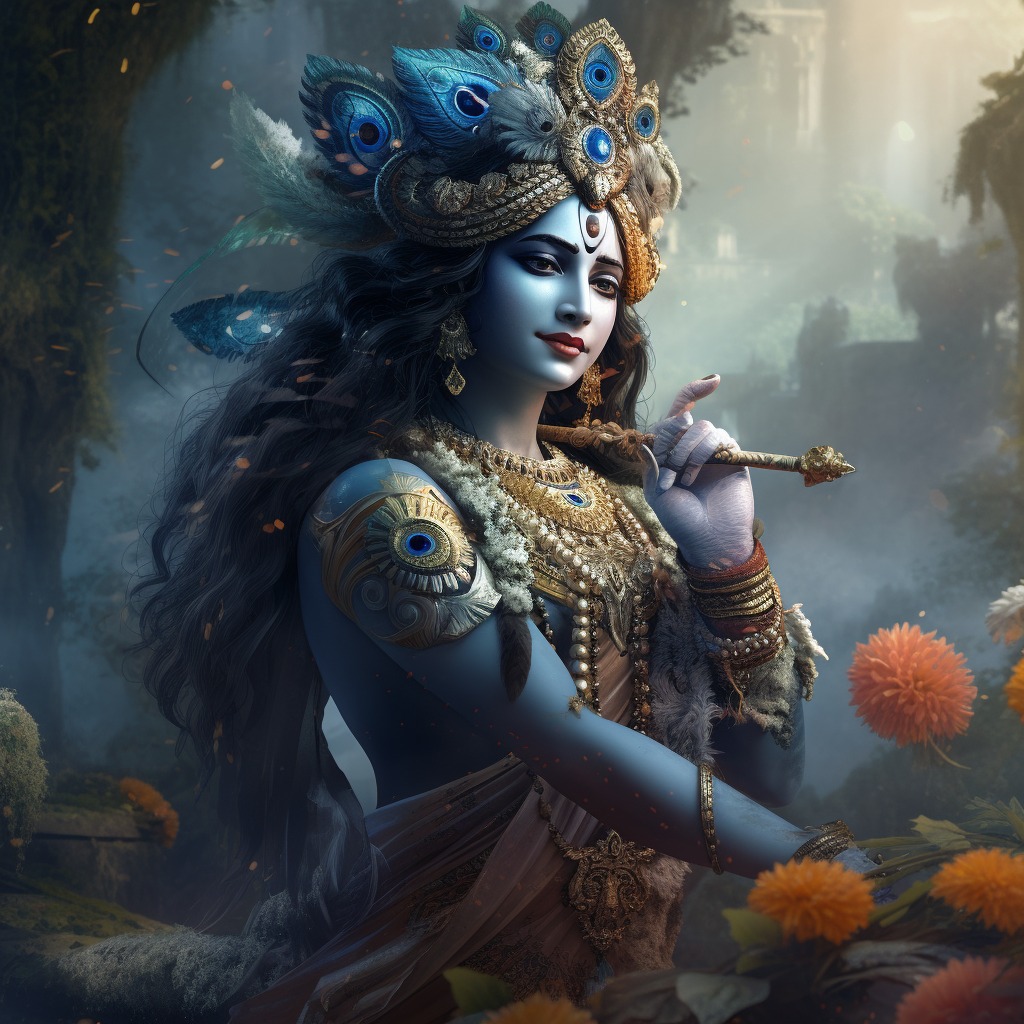


It was more than 5000 years ago that Lord Krishna personally descended on this Earth as the Supreme Personality of Godhead, to bless his devotees, punish the miscreants, spread the Divine knowledge and to establish law and order. Shri Krishna appeared in Mathura as a son of Nand and Devaki. His birthday is celebrated every year as ‘Janmashtami’ all over the world with grandeur and devotion. It is the biggest birthday celebration in the world, which encompasses the men made boundaries of caste, beliefs, and nationality etc. and gives everyone a chance to gather and glorify the Supreme Lord with love and reverence. His appearance in the material world was a transcendental event, as mentioned in Srimad Bhagavad-Gita
Lord Krishna to Arjuna
“One who knows the transcendental nature of My appearance and activities does not, upon leaving the body, take his birth again in this material world, but attains My eternal abode, O Arjuna.”
Why did Bal-Gopal steal butter?
Stealing is an abominable act, but when Lord Krishna stole butter, He became worshippable as Makhan Chor, this was a sweet pastime of the Lord, and by performing such pastimes he gives bliss to His associates.
Stealing butter is an exchange of love between Krishna and his devotees. The Lord creates such leelas (pastimes) to bewilder mental speculators and atheists and bestow His mercy to His devotees.
Lord Krishna could have created mountains of butter through His mystic powers, but He wanted to distribute His loving devotional service to Brijwasis (inhabitants of Brij), and this made Him perform this pastime.
Did Shri Krishna cause the battle of Mahabharat?
Krishna was never the cause of the battle of Mahabharat. Krishna decided not to fight in the war and not to pick up his weapons.
Her had previously made several attempts to peacefully resolve the dispute between two sides- one of which represented virtue and the other represented vice.
As the last attempt to bring peace, He visited Duryodhana’s court and asked him to give just 5 villages to the 5 Pandavas, so that the battle could be averted. But wicked Duryodhana asked his soldiers to arrest Lord Krishna, though Krishna visited Duryodhana’s court as a diplomat.
Krishna advised both the sides of their duties several times. Duryodhana got enraged, whereas Arjun surrendered to Him as a disciple.
Should we not keep the Mahabharat at our homes?
It is a misbelief that the Mahabharat is all about war, betrayals, cunningness, and hatred; so, keeping it in the house would make the family members quarrel with each other and thereby peace at home would be destroyed.
This is a mere superstition, there is no evidence of any sort that the Mahabharat created troubles in people’s lives or caused disharmony among family members.
The Mahabharat is one of the greatest epics ever written in the history of humankind. The Mahabharat embodies divine teachings, lessons for life, rich philosophy, beautiful culture and unparallel characters.
So, its highly auspicious to have this great book at home, since it’s a genuine portrait of India’s true culture and civilization.
Is Lord Krishna a fictional character?
There is numerous evidence that Lord Krishna was once actually present on Earth.
a) Archaeological Evidence: The strongest archaeological support comes from structures discovered in late 1980s under the seabed off the coast of modern Dwarka in Gujarat, India by a team of archaeologists and divers led by Dr S.R. Rao, who is an eminent Emeritus Scientist.
b) Carbon Dating Evidence: Thermoluminescence dating of relics and carbon dating of sites in Swarka and Kurukshetra have established the existence and worship of Lord Krishna.
c) Scriptural Evidence: The Mahabharat, Srimad Bhagavad-Gita, Puranas and several other Vedic scriptures clearly and strongly mention about Lord Krishna or have Him as the central/chief character.
d) Cultural Practices: Several cultural practices including traditional Indian dances, music, poetry, customs, storytelling, imagery depict Krishna and His pastimes.
e) Beliefs: People’s belief in Shri Krishna has existed since time immemorial as a Prime Deity and Lord. Krishna has been worshipped across different cultures and geographical areas. This belief couldn’t have existed had Krishna been a fictional character.
Fasts, places, scriptures, legends, evidence, and cultural aspects clearly point towards the presence and existence of Krishna as an actual Personality.
Did Shri Krishna ever lie?
Krishna himself answered this question in Mahabharata. While reviving dead child of Abhimanyu’s wife Uttara, Krishna said he never spoke untruth in his entire lifetime. Truth and righteousness were always established in him. After these words were uttered, Uttara’s child Parikshit came back to life.
Furthermore, He delivered the Divine message of Srimad Bhagavad-Gita to Arjuna in the battlefield of Kurukshetra. Gita is the Highest Truth/Absolute Truth. So how can its speaker be a liar? He must be the most truthful person. So, it can be said to understand life and the purpose of life one needs to understand Krishna.